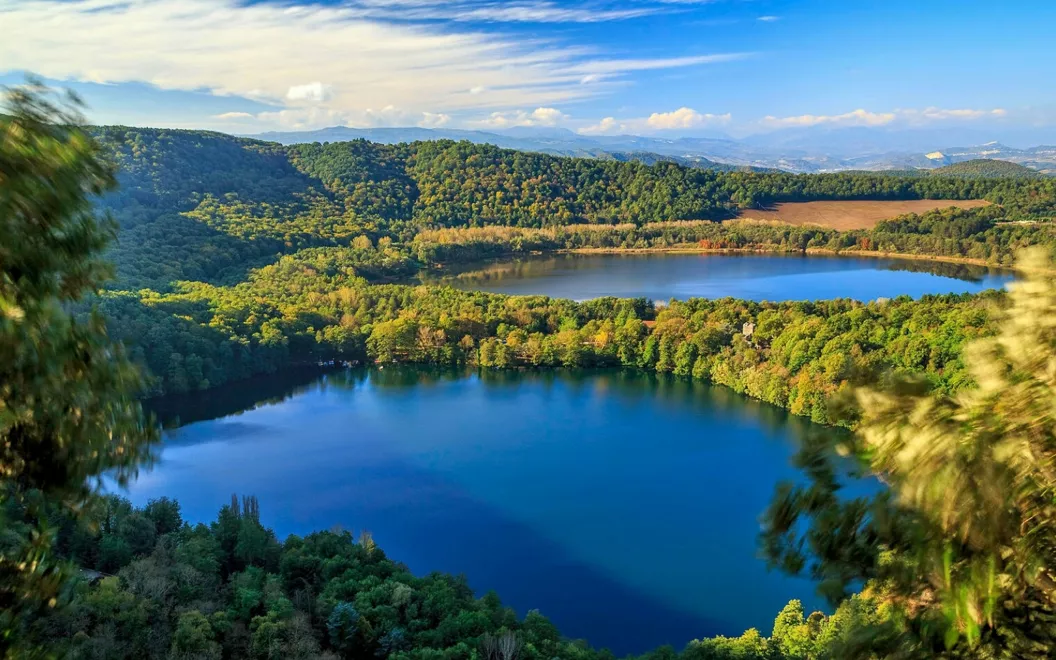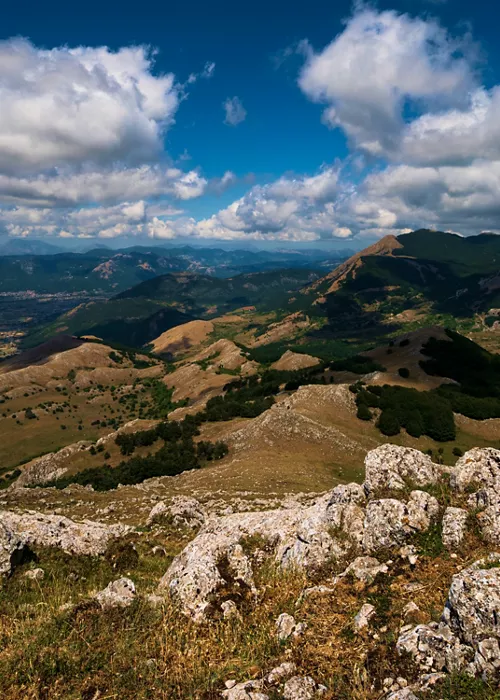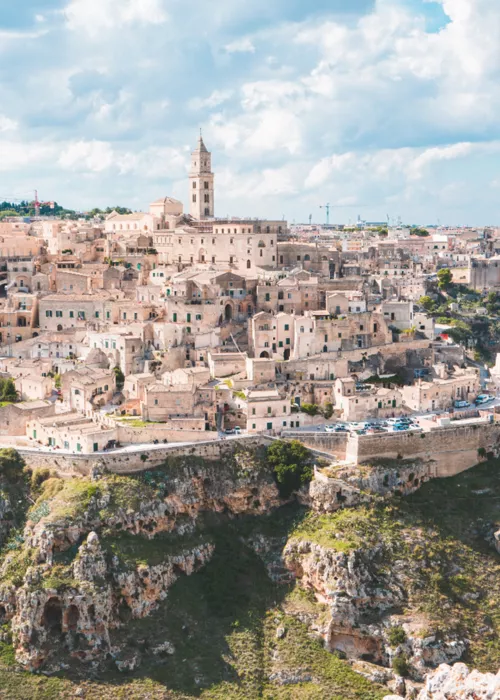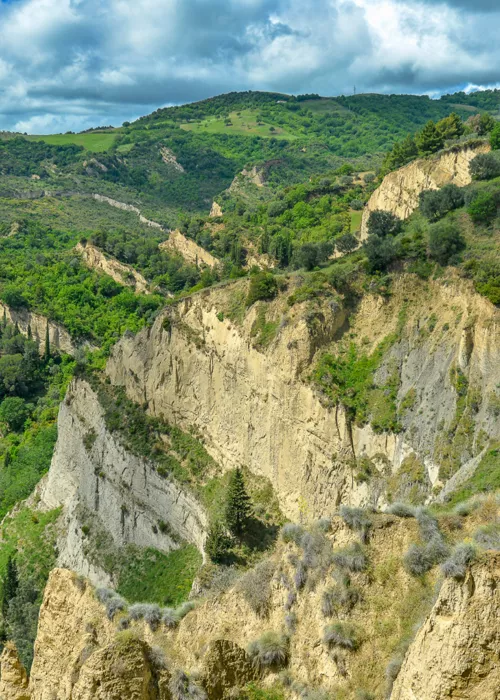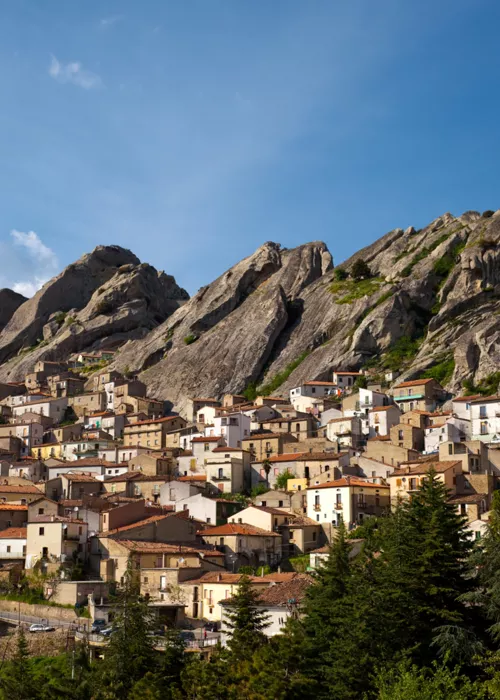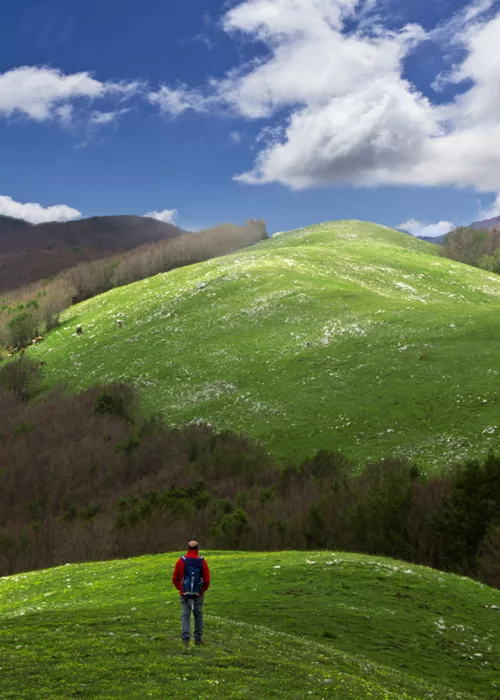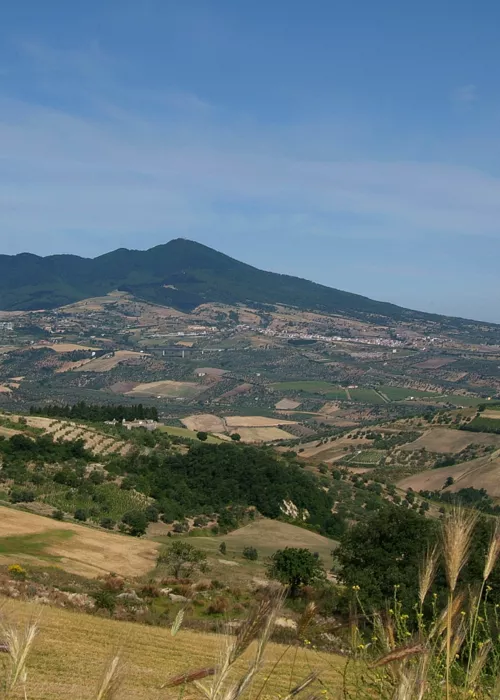The observatory on the summit of Monte Toppo

Your departure point is Castelgrande, a village on the border with Campania, perched on a rocky outcrop in the westernmost corner of Basilicata. You will find yourself in an area characterised by brigandage, a post-unification Italian phenomenon of rebellion against the Savoy family, which has left an indelible mark on local history and culture. You will cycle through forests and scrubland alternating with high-altitude meadows. The villages are mostly concentrated on the mountain tops.
From the small village of Castelgrande, with a population of just 1,000, you can climb to the 1,248-metre-high summit of Monte Toppo. At the top, a strange glint will catch your eye: this will be the dome of the astronomical observatory. The lack of light pollution makes the area perfect for stargazing. What better place to refresh yourself from the steep climb?
The Monticchio Lakes, in the heart of Vulture

You set off again towards Rapone, a splendid hill-top village overlooking the charming Vitalba Valley. After passing through the town, you reach Ruvo del Monte, dominated by the Castle and the Angevin Tower. Nearby are the San Fele Waterfalls, connected by a series of paths, which are worth a short hike.
As you reach the Vitalba Valley leading to Atella, you will spot the Lagopesole castle in the distance, dating to the rule of Frederick II, Duke of Swabia, looming over the valley from a fort. You are in Vulture, a sub-region of Basilicata, named after the extinct volcano. The area is known for producing Aglianico wine: the ancient grape varieties probably originated in Greece and were imported between the 7th and 6th centuries BC, as testified by the remains of a Roman wine press in the area of Rionero in Vulture. Take the opportunity to sip a delicious glass, accompanied by local delicacies. Perhaps with ciambotta, a hollowed-out bread bowl filled with fried potatoes, peppers, aubergines and tomatoes. In addition to wine, this area is also home to excellent effervescent and mineral-rich waters, thanks to the black volcanic rock. The Monticchio Lakes are the last destination ideal for an excursion, a few kilometres from Atella, set in the craters of the Vulture volcano.
Poggiorsini, on the shores of Lago di Serra del Corvo lake

Leaving the Vitalba Valley, a small detour takes you to Ripacandida: here, we recommend visiting the Sanctuary of San Donato, where you can admire 15th-century frescoes of rare beauty, depicting scenes from the New and Old Testament. You can recoup your energy with a spoonful of local honey.
Cycling through the vineyards of Aglianico, you will reach Maschito, one of the many towns where the Arbëreshë language, spoken by an ethno-linguistic minority in some southern Italian towns since the 15th century, is still widespread. A few kilometres away is Venosa, an ancient Roman city rich in history. You can visit its archaeological park and the Most Holy Trinity Complex, including the Unfinished church.
As soon as you leave Maschito, you encounter a completely different landscape: the Bradano Valley. Amid expanses of wheat, you will head south from Palazzo San Gervasio to the province of Potenza. Towering in the distance is another stronghold: the Monteserico Castle, the site of the Battle of Montepeloso in the early 1000s, which consolidated the Norman presence in Basilicata and throughout southern Italy.
You have reached the finish line: the final stage is in Poggiorsini, on the border with Apulia, on the Lago di Serra del Corvo lake.

